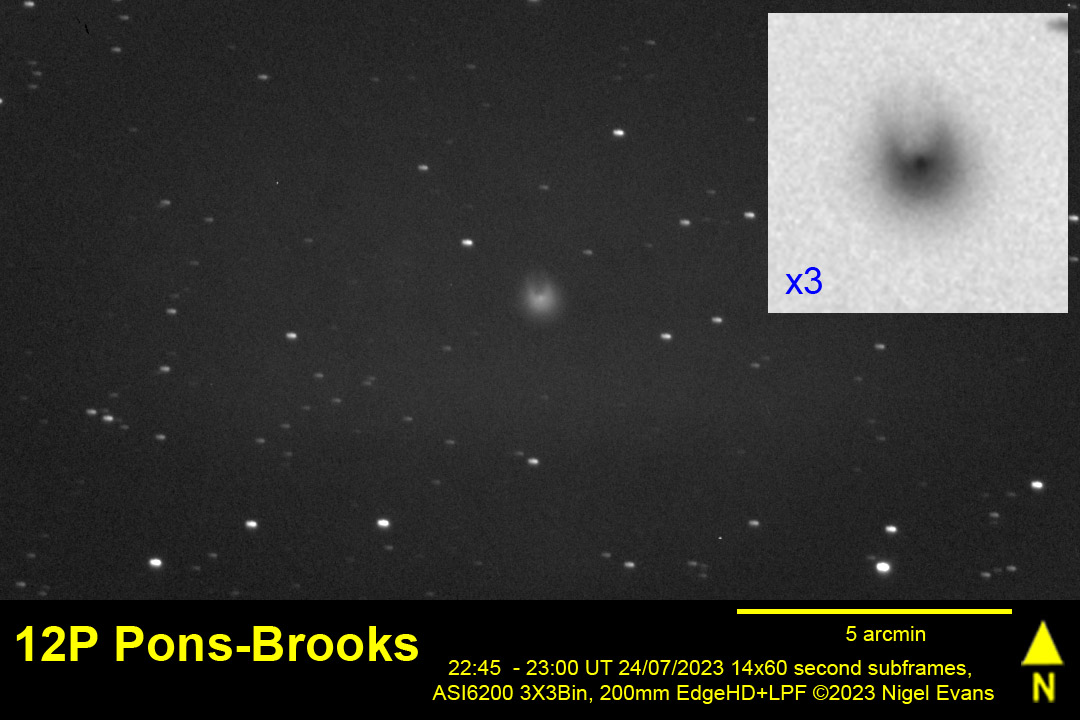
Orwell Astronomical Society (Ipswich)
Comet 12P/Pons-Brooks, 24 July 2023 - 01 April 2024
Comet 12P/Pons-Brooks is a periodic comet which was discovered on 12 July 1812 by Jean-Louis Pons, subsequently lost, and then independently re-discovered by William Robert Brooks on 02 September 1883.
The comet comes to perihelion on 21 April 2024 at a distance from the Sun of 0.8 AU and makes its closest approach to Earth on 02 June at a distance of 1.55 AU. Around this time, the comet is predicted to brighten to approximately magnitude 4.5.
On 20 July 2023, on approach to perihelion, the comet underwent an outburst, brightening from magnitude 17 to magnitude 12. Post-outburst, the coma appeared compact, and displayed a dark lane, possibly caused by a sudden release of material with the nucleus acting as a blast shield.
Images below were taken by Nigel Evans in east Ipswich on 24 and 26 July 2023.
Michael Maran, near Mendlesham, created the following image on 08 March 2024 using a Dwarf II "smart" telescope (aperture diameter 24 mm, focal length 100 mm, f-number 4.2.) Two five-minute images, each composed of a stack of 60 five-second exposures, were taken 30 minutes apart then superimposed, manually aligned with regard to the star field, to show the motion of the comet.
Michael captured the following image on 22 March 2024, at 20:30 UT, again using the Dwarf II. It is formed as a stack of 180 five-second images covering a FoV 3x1.5°. On zooming-in to the nucleus, there is perhaps the slightest hint of the dark lane seen by Nigel eight months earlier. The slight elongation of the nucleus L-R is due to the motion of the comet in the sky.
On 01 April 2024, the comet was easy to find using 10x50 binoculars as it was close to Hamal (α Arietis). Martin Cook captured the below image in east Ipswich, between 19:54 and 20:06 UT using a Skywatcher 200p telescope with Canon EOS 850D camera.
The image below was formed from 20 light frames and five dark frames, all taken with 10 s exposure at ISO 1600; the raw images were stacked in Deep Sky Stacker using comet mode, aligning the stars and comet separately, and the resulting composite image was processed in Affinity Photo to remove some of the light pollution and darken the background.
Image processing was challenging as the comet was at an altitude of only 20°, the sky was bright as the Sun was only 5° below the horizon and there was considerable sky-glow from the lights of the nearby car park of Ipswich Hospital. The image to right is a raw image taken at this time, showing the brightness of the sky.
In the image, the comet shows no evidence of the dark lane.
Nigel Evans, Michael Maran, Martin Cook